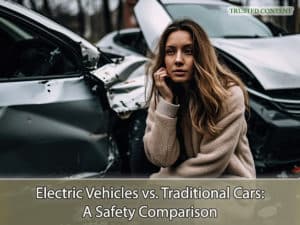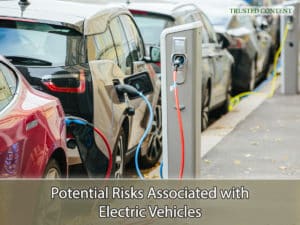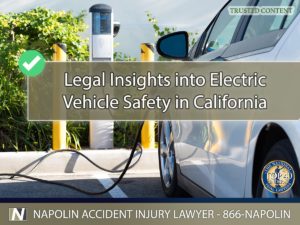The Future on Wheels: Legal Insights into Electric Vehicle Safety in California
The shift towards electric vehicles (EVs) in California marks a significant turn in automotive preferences, driven by advancements in technology and a growing consciousness about environmental impact. This article delves into the safety aspects of EVs, particularly in the context of accidents, and discusses the legal perspectives relevant to California residents.

Electric Vehicles vs. Traditional Cars- A Safety Comparison
Electric Vehicles vs. Traditional Cars: A Safety Comparison
Power Source and Structural Differences
Electric vehicles, powered by batteries and electric motors, present a stark contrast to traditional gasoline-powered cars. This fundamental difference in power source leads to distinct structural designs, influencing overall vehicle safety.
Vehicle Weight and Stability
The weight of EVs, primarily due to their batteries, impacts their stability. The battery placement often lowers the vehicle's center of gravity, reducing the risk of rollovers, a significant factor in vehicle safety.
Frontal Crumple Zones and Safety Design
EVs typically have more effective frontal crumple zones compared to traditional cars. The absence of a large engine in the front allows for better energy absorption during collisions, enhancing passenger safety.
Safety Features of Modern Electric Vehicles
Advanced Safety Technologies
Modern EVs are often equipped with cutting-edge safety features like Autonomous Emergency Braking (AEB) and Lane Keeping Assist, contributing to a safer driving experience.
Safety Testing and Ratings
EVs have consistently performed well in safety tests conducted by organizations like the National Highway Traffic Safety Administration (NHTSA) and the Insurance Institute for Highway Safety (IIHS), often receiving top ratings.

Potential Risks Associated with Electric Vehicles
Potential Risks Associated with Electric Vehicles
Battery Integrity Post-Collision
Post-collision, the integrity of EV batteries is a concern, with potential risks such as delayed fires. However, safety standards are rigorously applied to mitigate these risks.
Quiet Operation and Pedestrian Safety
The quiet operation of EVs can pose risks to pedestrians, who may not hear the vehicle approaching. Regulatory measures are being implemented to address this issue.
High-Voltage Component Safety
EVs contain high-voltage components that, if exposed or damaged in a crash, can be hazardous. However, EVs are designed with safety cutoffs to minimize these risks.
Environmental and Broader Safety Implications
Emission Reduction and Air Quality
EVs contribute positively to the environment by reducing emissions, leading to cleaner air and associated health benefits.
Reducing Oil Spills and Environmental Contamination
The adoption of EVs decreases the reliance on oil, thereby reducing the risks of oil spills and environmental contamination.

The Future on Wheels- Legal Insights into Electric Vehicle Safety in California
The Future on Wheels: Legal Insights into Electric Vehicle Safety in California
Napolin Accident Injury Lawyer possesses the expertise to navigate these complex cases, ensuring that the rights of those involved in EV accidents are adequately represented. As electric vehicles become more prevalent, understanding their safety features and legal implications is essential. For those in California facing legal issues related to EV accidents, Napolin Accident Injury Lawyer offers expert guidance and representation. Contact us at (866)-NAPOLIN for a free consultation and benefit from our extensive litigation experience in this evolving field.
- A Guide on Red Light Auto Accidents in California - August 14, 2024
- Self-Representing in a California Personal Injury Claim - August 13, 2024
- Common Sources of Distraction for Drivers in California - August 13, 2024
